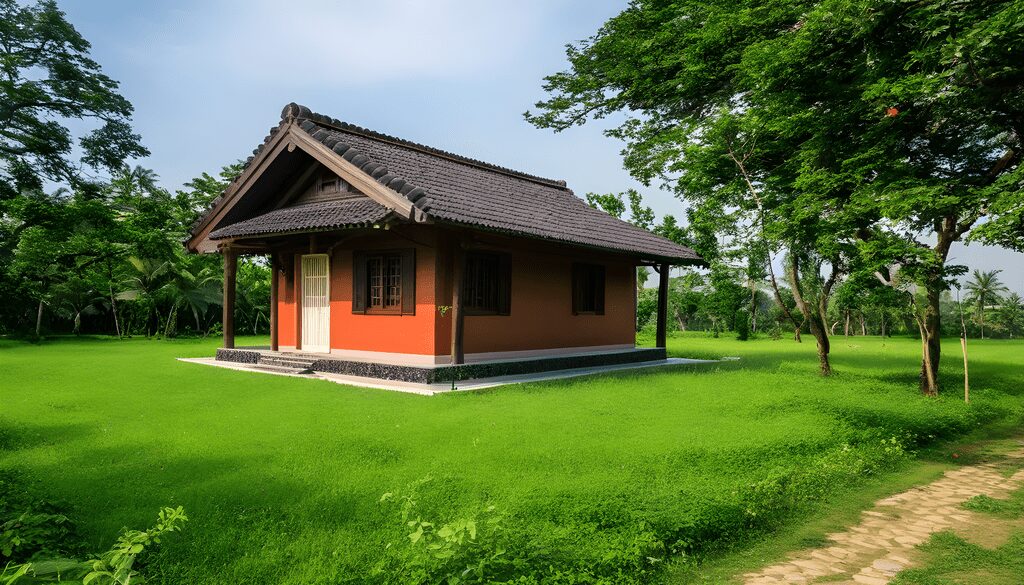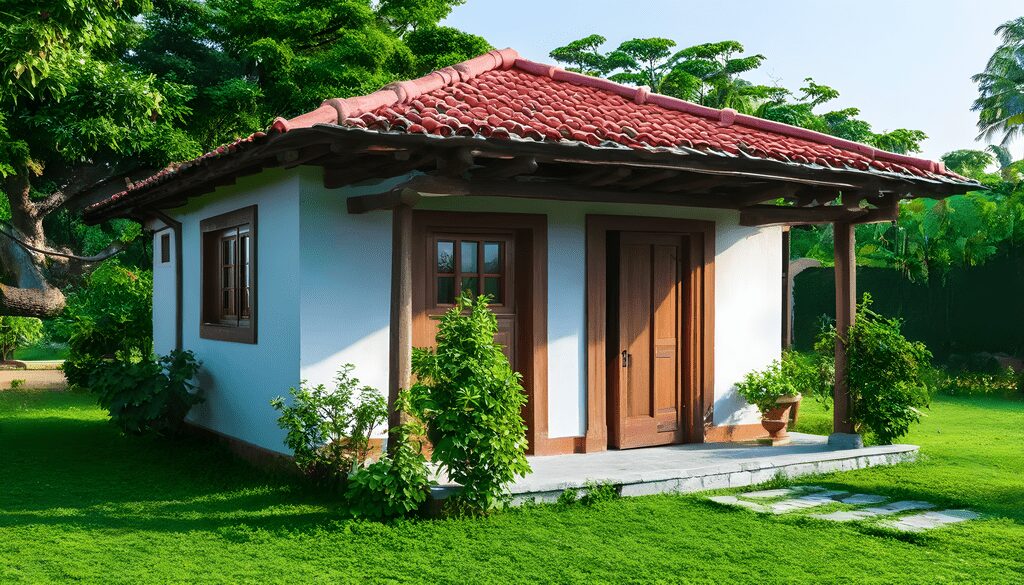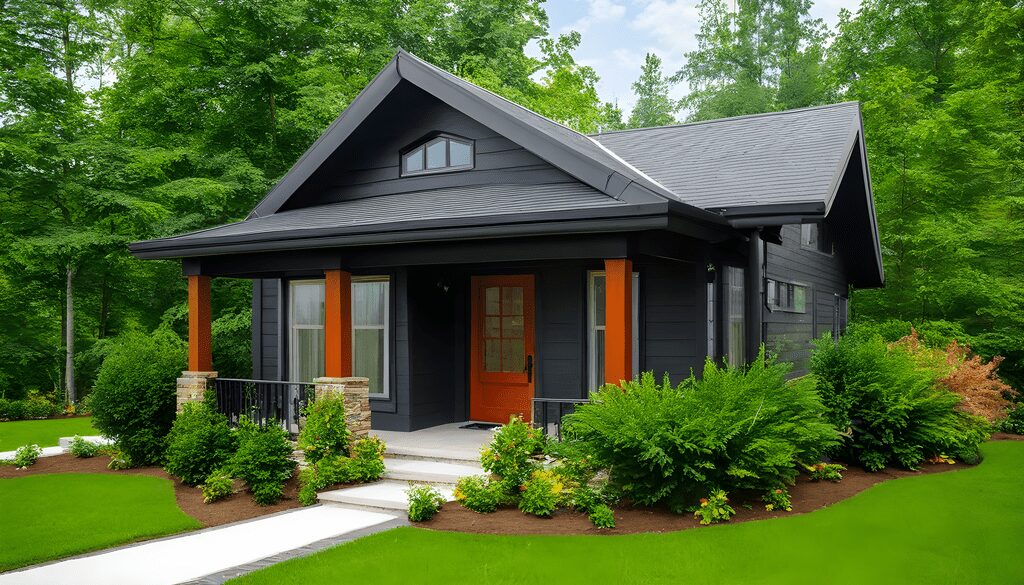People are searching for more economical and environmentally friendly housing solutions, and tiny homes are growing in popularity. Prior to making a downsizing decision, it’s crucial to evaluate how much space you actually require. While 200 square feet is the typical tiny home size, larger and smaller models are also available. Your unique needs and lifestyle will determine the size of the home you select.

The definition of a tiny house, typical tiny home size, advantages of living in one, and drawbacks will all be covered in this article. By the time you finish reading this article, we hope you will know more about what it takes to live in a tiny house and whether it’s the right move for you.
Definition of a Tiny House
A tiny house is a self-contained, compact home that is usually transportable and constructed on wheels. A tiny house’s dimensions might vary, but they typically range from 100 to 400 square feet. Often, conventional building materials like metal, wood, and even recycled materials are used to make them. While most tiny homes are constructed in compliance with local building laws, some may be excluded from some requirements because of their small size.
For people who lack the funds or available room for a larger home, tiny homes might offer an economical housing alternative. They are also well-liked by individuals seeking a less costly and more sustainable alternative to typical dwelling options. Furthermore, a lot of people discover that having a tiny house gives them greater flexibility and a deeper connection to the outdoors than they could get from more conventional housing options.
Space needed for a Tiny House
The typical tiny home size is between 100 and 400 square feet, while some can be smaller or larger based on the needs and tastes of the owner. All things considered, a smaller house is generally easier to transfer and relocate from one place to another. Among the often used sizes are:
100–150 square feet: This is the ideal size for anyone seeking a functional home with few extras. Usually, it consists of a single room that houses a sleeping area, kitchenette, and bathroom.
150–200 square feet: This amount of space is sufficient for two rooms, usually a kitchen/living area and a bedroom/sleeping area, plus a little amount of extra storage.
200–300 square feet: This size is perfect for couples or small families who require more space than what is provided in smaller models, since it allows for two distinct rooms in addition to some more storage space.
300-400+ square feet: This size provides enough room for multiple bedrooms, bathrooms, kitchens, living areas, etc., making it suitable for larger families or those who need extra room for guests or hobbies.
Typical Tiny House Sizes

Although there are many other sizes for tiny houses, the most popular ones are 8×20, 10×20, 12×24, and 14×28. Your lifestyle and needs will determine the size you select.
8 by 20 Tiny House
One of the tiniest alternatives is the 8×20 little cottage. It provides a functional living area with sufficient space for two individuals to sleep well. For people who prefer a more modest lifestyle or who wish to travel frequently, this size is ideal.
10 by 20 Tiny House
With its slightly bigger size than the 8×20 option, the 10×20 tiny house provides extra living space for two people. For people who want to set up a tiny workspace or who need additional storage, this size is ideal.
12 x 24 Tiny House
For individuals who want more living space without sacrificing the efficiency and small size of their home, the 12×24 tiny house is a fantastic choice. This size provides lots of workplace and storage space, comfortably sleeping up to four people.
14 x 28 Tiny House
For individuals who wish to live in a tiny house, the largest option is the 14×28 tiny house. This size offers lots of space for storage and hobbies like yoga or handicraft, and it can easily fit up to six people. It’s also perfect for people who require more space for their pets or who wish to entertain guests.
It’s crucial to think about how much living space you’ll need before selecting a size, regardless of your preference. Speak with a tiny house specialist who can walk you through the process if you’re not sure which size would be ideal for your lifestyle.
Advantages of small living
- Financial Emancipation
Tiny homes have a revolutionary effect on finances. Imagine a world in which paying your mortgage feels more like a doable hill than an impossible mountain. The constraints of massive house payments can be broken by living in a tiny place, freeing up funds for travel, experiences.
- Environmental High-Five
Tiny house residents are the green thumbs of the housing sector, and Mother Earth deserves a pat on the back. These tiny dwellings have an extremely small ecological imprint. Tiny homes are a sustainable haven for individuals that value using less resources when building, as evidenced by their lower energy consumption and lower building materials requirements.
- The Ultimate Sophistication Is Simplicity
The style experts of the architecture world are tiny dwellings. Less is more is the simple maxim. Adopt a design philosophy that prioritizes functionality over extravagance, multipurpose furniture, and creative storage options to embrace the minimalist chic look. Tiny house living is more than simply a way of life; it’s a statement in design that communicates a lot without using words.
- The Transportable Palace: Nomad-Friendly Lifestyle
Are you tired of looking out your window? Not a problem! The ideal home for nomads are tiny dwellings. Your house might be as mobile as your dreams if it has wheels or a strong foundation. Imagine one week you wake up to the sound of waves smashing, and the next you are surrounded by calm mountains. Your tiny abode is your pass to an always expanding horizon, and the world is your backyard.
Disadvantages of small living
- Where Do My Clothes Go
The main drawback of living in a compact house is the limited amount of space for storage and living. For those who own larger objects, including furniture or appliances, fitting them into smaller homes can be challenging or impossible due to their small size. Furthermore, because tiny houses are little, their residents frequently have to get inventive when coming up with storage options or methods to make the most of every square inch of space inside their residence.
- Small Kitchen
Tiny house kitchens are a sobering reminder of reality for individuals who consider themselves culinary artists. Imagine Twister played with hot pans and a cat on the ground. Elaborate dinner parties are out of the question in tiny houses; instead, it’s more like a solo culinary demonstration with an intimately close-knit audience.
Conclusion
A tiny house can be a terrific way to simplify your life, save money, and lessen your influence on the environment. But before deciding to downsize, it’s crucial to take into account the difficulties of living in a tiny home. A tiny house’s size can be problematic since it reduces the amount of room that can be used for living and storage. Furthermore, there are zoning laws that could restrict where you can put your tiny house.
All things considered, many people who want to live more sustainably and simply find that living in a tiny house is an appealing option. It’s crucial to consider the advantages and disadvantages before selecting if this is the best option for you.
